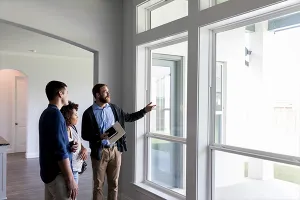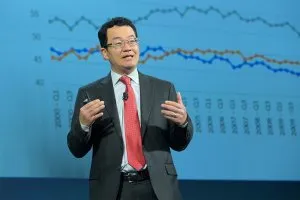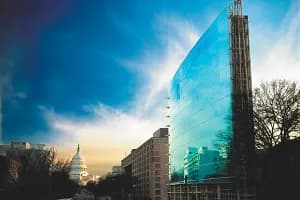With the economic downturn here and solid growth within the Mexican economy, there has been a tremendous shift in immigration patterns from Mexico. Pew Research Center has found that Mexican immigration to the U.S. has leveled off. Recent revisions in census data conclude that the Mexican-born U.S. population grew by less than one percent from 2009 to 2010, and that they represented just six percent of the growth in foreign-born population during that period.
There are segments of the Mexican population where immigration to the U.S. is increasing: entrepreneurs, investors and the middle class. In fact, the trend has been labeled the “Mexodus” in a recent study by four U.S. and Mexican universities. Somewhat under the radar for most of the American public, a sizable number of Mexican investors and business owners have been moving north to make significant investments in U.S. property and business startups, generating jobs for Americans along the way.
Number 3 in U.S. Foreign Direct Investment
In 2011, Mexicans (including Mexican- born residents here) purchased $5.74 billion in U.S. real estate. That represents 7 percent of properties sold to international buyers, and it makes Mexico the third largest investor after Canada and China. Mexican-born buyers are a significant force in the U.S. economy.
Mexican corporations have been expanding into our markets by acquiring American companies. Grupo Bimbo bought Sara Lee Bakeries, and now produces well-known brands like Entenmann’s and Thomas’ English muffins. The world’s richest man, Mexican Carlos Slim, reportedly worth $63 billion, bought a 6.9 percent share in The New York Times, as well as a building at 417 Fifth Avenue in Manhattan for $140 million. A Mexican automotive parts manufacturer employs more than 1,000 American workers at a facility they built in Tennessee.
Mexico’s economic growth has been fueled by oil production and the manufacturing of electronic, auto and aviation parts exported to our market. Maquilas, manufacturing plants benefiting from NAFTA, have sprung up on the border, supplying jobs to Mexicans who previously might have moved north for better opportunities. The middle class has prospered and poverty has been reduced.
Why buy in the U.S.?
Since the start of President Calderon’s war on drug cartels, the issue of seguridad (security) has become one factor compelling Mexicans northward. Wealthy Mexicans have become targets for extortion and kidnap by drug cartel operatives. Fearing for their safety, some are moving their families to the United States. Middle-class business owners, tired of paying “street taxes,” are selling their businesses to buy or open similar enterprises on the U.S. side of the border.
Mexicans have also been attracted to the U.S. market by the same factors that interest other foreign nationals—the plunge in our property prices, the weakness of the dollar, and the relative stability of the U.S. financial markets.
Three popular routes to a visa
Under U.S. immigration law and NAFTA, there are several ways for Mexican business people to relocate their families temporarily to the States.
-
E-1 and E-2 visas are available to citizens whose countries have trade treaties in place with the United States. Known as treaty trader and treaty investor visas, they allow investors and key executives involved in transnational trade to reside in the U.S. with their families for up to five years at a time. Both visas can be renewed indefinitely as long as the investment or trade continues. According to the State Department, more than 10,000 E-1 and E-2 treaty visas were issued to Mexicans between 2006 and 2010.
-
The TNB visa, available through the provisions of NAFTA, allows Mexicans in designated professions to work and live with their families in the U.S. It can be renewed every three years.
-
The EB-5 visa, informally known as investors’ visas, encourage foreign nationals to make a significant investment in U.S. job creation in return for a green card for them and their families. Mexican investors can apply under the EB-5 program for as little as a $500,000 investment in a “Regional Center” program, without actually having to start or run a business.
Buying a broad spectrum of properties
Because business and investment are their paths to U.S. residency, Mexican nationals are purchasing across all types of real estate.
Residential properties: Agents selling to Mexican investors in Arizona and Texas report that upscale homes in gated communities are especially desirable, because they have the same level of security buyers are used to having in their Mexican homes. A wave of new arrivals are building or buying high-end homes in Nogales, Arizona, and San Antonio, Houston, Dallas, and recently Austin.
Income properties: Groups of Mexican investors are buying up apartment complexes in markets that have experienced substantial depreciation, like Dade County, Phoenix and Tucson. Also under development are luxury condominium projects in cities like McAllen, Texas.
Commercial enterprises: Small retail operations, franchises and restaurants attract investors who may sell a similar business in Mexico to operate one here. Mexican high-tech firms are buying office space for their operations and for leasing.
Industrial properties: Manufacturers are breaking ground on multimillion dollar plants in the Rio Grande Valley to expand operations into the U.S. market.
Texas a big destination
Not surprisingly, many Mexican investors look right over the border to Texas, due to its proximity and familiarity. “For many Mexican nationals, the Rio Grande Valley is the first place they’ll search for U.S. real estate,” says Horacio Gallegos, CCIM, who was 2011 Chair of the Texas Association of REALTORS® International Committee. “If all goes well, they will expand their investments further north to Houston, San Antonio and sometimes Austin.”
When commercial credit tightened, Texans started noticing that there was a great deal of wealth just over the border, looking for a safe place to land. Houston, San Antonio and Austin stepped up their promotion to Mexican investors by hosting seminars in Monterrey, Mexico City and Guadalajara, Jalisco.
EB-5 Regional Centers in Texas have become a magnet for Mexican investors looking for U.S. residency. The USANow Regional Center in McAllen had $500,000 commitments from over 150 Mexican families when it was approved in 2010. Between 30 and 40 percent of investors in the City of Dallas Regional Center are Mexican. With visa issuance came high- end residential sales.
For the most part, buyers from Mexico do not need financing. “Sales to Mexican nationals tend to be all cash,” says Gallegos. “Borrowing is frowned upon in their culture. If the purchase is large enough to require a loan on the property, they will put at least 30 percent down.” Low leverage in business transactions is also the cultural norm.
Miami a New Draw
Miami and South Florida have had a vibrant Hispanic community for years, but included few Mexicans, until recently. In the last five years, there has been a growing number of Mexican business owners and investors interested in this market. Now at around 100,000 residents, the Mexican-born population of South Florida has doubled in the last decade.
Miami has emerged as a global business center, due to its location as a gateway to Latin America, its international transportation infrastructure and its affordability. In the past, Mexico’s commerce has largely moved over land through neighboring Texas, Arizona and California. Mexico now ships a great deal of oil, electronics and other products through South Florida. As a result, Mexican companies and investors are expanding operations there, and buying property as they do.
The downturn in the housing market has been especially severe in Florida, bringing a flood of foreign investors looking for a solid rebound. Mexicans are investing with the same expectations. They are buying personal residences, distressed properties, multi-unit income properties and small businesses. In fact, many like that the city is not yet saturated with Mexican entrepreneurs, as some markets in Texas are.
“Property in Miami broke sales records in 2011, with more homes sold than ever in our history, even during the height of the boom in 2005,” reports Lynda Fernandez, CIPS and Senior Vice President for Public Relations at the Miami Association of REALTORS®. “This is primarily due to the impact of international buyers, who have helped our market recover faster and stronger. Mexicans and other foreign buyers looking for a good return on investment property and a vibrant business economy are finding this to be a great market.”
Mexican capital is flowing into major Miami construction projects involving office towers and office condo space. There are also Mexican financial advisors popping up in Miami’s Brickell financial district seeking to put together Mexican investment funds to buy distressed properties and turn them around for a healthy profit.
The maquila factor
Maquilas, or maquiladoras, are manufacturing operations that, under NAFTA, can import materials and supplies for assembly duty- and tariff-free, and then can export finished products, often to the country that was the source of supplies. There are an estimated 3,000 maquilas along the U.S.-Mexican border, in Mexican cities like Tijuana, Ciudad Juarez and Nogales. Together, they employ about one million Mexican workers and account for as much as half of Mexico’s exports.
The maquilas have been an engine for Mexico’s growth, creating jobs for workers and wealth for the Mexican owners. Because of their proximity to the border, owners have been able to take advantage of trade visas to reside in the U.S. while still being close to their plants. U.S. cities like Nogales and El Paso, just over the border from heavy maquila industrial areas, have had an influx of wealthy Mexican maquila owners into their higher-end residential areas.
Trade missions open the door
Trade missions and foreign direct investment (FDI) promotion seem to initially make Mexican investors aware of opportunities that are further away from the border. Austin trailed behind other Texas cities further south in attracting interest because of Mexicans’ lack of familiarity. Since it started holding seminars in major cities like Monterrey, Mexico City and Guadalajara, it has begun attracting a younger generation of businesspeople who are drawn to the city’s high-tech reputation.
Even further north, the state of Idaho has an Idaho-Mexico Trade Office that operates trade missions to promote investment in lumber and mining-related equipment. In 2010, a Mexican furniture manufacturer sold his businesses in Mexico and moved to Caldwell, outside of Boise, investing $1,000,000 under the EB-5 program to start a new furniture factory there. Twenty- four states have economic development offices in Mexico.
Reaching out through trade missions is especially important as many Mexican investors do not want to make public the fact that they have funds to invest.
There are also many other routes to tap Mexican-rooted business and communities scattered across the U.S. See the map below to find out where major concentrations of Mexican nationals reside.








